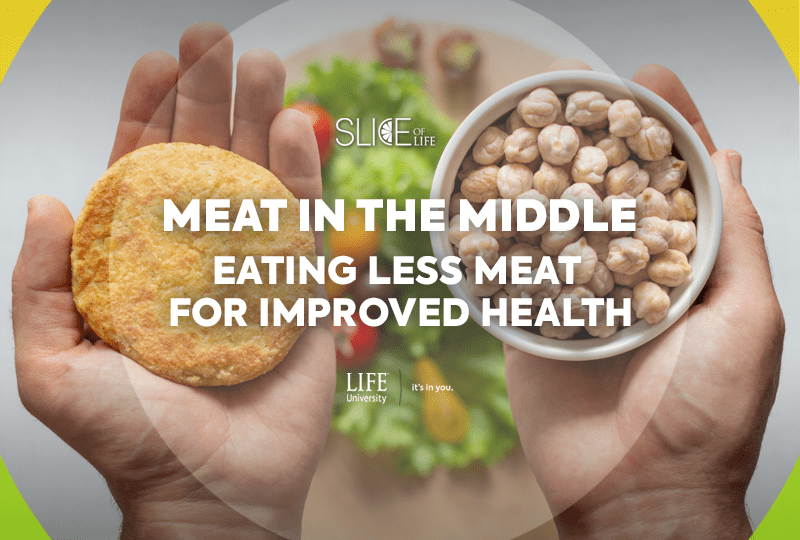When it comes to the subject of whether people should eat meat, the thought is fraught with many seemingly black-and-white ethical and health considerations. The assumed sentiment often seems to be either someone is a regular meat eater or that they need to be a vegetarian, but in fact, the matter is not nearly so cut and dry. Even those that do not choose to take up vegetarianism can benefit from reducing their meat intake and instead incorporating meatless meals as a regular part of their dietary routines. There is actually a fun term for a person that primarily eats healthful plant-based foods but sometimes occasionally eats meat or fish: a flexitarian.
According to the American Heart Association in an article titled “How does Plant-Forward (Plant-Based) Eating Benefit your Health?”, reducing meat intake in turn reduces the risk for heart disease, stroke, obesity, high blood pressure, high cholesterol, type 2 diabetes and many types of cancer.
Meat often contains considerable cholesterol and saturated fat, both of which put pressure on the heart. Favorite processed meats like deli meat, bacon and sausage tend to have excess sodium as well. Lean meats, skinless chicken and fish can be good sources of protein and are preferable meat choices if it is required.
Protein that’s Green
Regardless of a person’s preferred dietary style, it is worth noting that needed protein sources are readily available in the produce aisle. Tofu, quinoa, mushrooms, chickpeas, as well as most beans and legumes pack quite a protein punch. Most don’t know that there are many good vegetable sources of protein, including artichokes, asparagus, broccoli, brussel sprouts, collards, corn, potatoes, peppers, spinach, sweet potatoes and turnip greens.
It’s important to remember that not all plant-based diets are healthy, however. Don’t go out and replace meat with vegetarian junk food (e.g., the French Fry diet). Instead, incorporate high-quality, nutritious plant-based foods like vegetables, fruits, whole grains and nuts.
Easing into Meatless Meals
As detailed in SlenderKitchen’s “The Beginner’s Guide to Vegetarian Meal Planning,” a little bit of pre-planning can go a long way to make the idea of having a Meatless Monday dinner (or two or more meatless meal days a week) not so daunting.
- Set your goals. If you shop looking for foods that best meet your nutritional goals, then that will set you up for success.
- Search for recipes. Whether you are a skilled cook or keep to the basics, prepping your own meals gives you more direct control over what you and your family eat. Try to keep all the recipes that work for you in the same place for easy access.
- Make a grocery list. Again, listing what you need beforehand will help take the guesswork out in the store, helping to avoid reverting to unhealthful past choices or impulse buys.
- A general list of things to include in meatless meals are:
- Fruits and Vegetables
- A protein source, such as beans, tofu, seitan or other meat alternatives
- Grains that cook quickly, such as oats, rice, quinoa and thin pasta
- Eggs
For more ideas on how to reimagine meal planning, check out this imaginative guide.
Slice of LIFE is an invitation to and extension of everything happening at Life University. Whether you are a current student, a potential freshman or a proud alum, Slice of LIFE can help keep you connected to your academic community. Know of a compelling Life U story to be shared, such as a riveting project, innovative group or something similar? Let us know by emailing Marketing@life.edu.
Learn more about Nutrition programs at Life U here.


Social Media